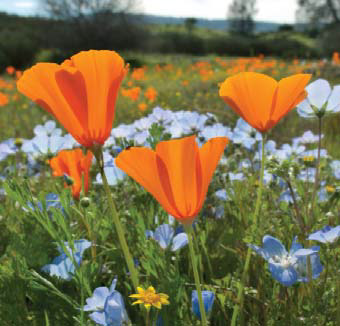Reversing our Environmental Footprint
Reflecting upon my life’s journey, I’ve come to understand the full impact that nature and its incredible beauty have had on my personal values. It’s my belief that “Nature” is God’s art; and, when undisturbed by man, it’s perfect, both in beauty and in harmony. Unfortunately, we humans have ideas about how nature can better serve our “needs;” and we seek to alter it, often destroying both the beauty and the harmony.

© iStockphoto.com/OndagoArts
It’s my goal to reduce and/or to reverse not only my own “carbon footprint” but also the giant carbon footprint that man has placed on our environment.
By way of background, my father was a Swedish immigrant and my mother, a Canadian nurse. Because of my father’s love of the Canadian north, my early years were spent in the Canadian bush country; we lived in a log cabin, which my father had built for our family. This early exposure to pristine natural beauty may, in part, explain my passion for “saving the world.”
In 1964 while working as a registered nurse in San Francisco, I read Rachel Carson’s book, Silent Spring. It awoke me to the damage already done to our environment and to the need for immediate action. For many years I did my part – recycling, reusing and conserving – but in the 1980s I began a restoration effort in the yard around our home. The existing landscaping – lush exotics and Algerian ivy (non-native water users) – was denying the wildlife their habitat, without which they cannot survive. Essentially, we had destroyed their right to exist and, potentially, to co-exist with us.
Reverse the process! Remove the non-native plants and replace them with drought-tolerant California natives. What started as a project has become a mission – a mission that’s lasted for 20 years – and one that’s prompted me to open my yard to garden tours, horticulture classes, garden club meetings and fundraisers for the Theodore Payne Foundation for Native Plants and Wildflowers. In addition to our native plants’ being important to the survival of wildlife, they’re our heritage. These beautiful plants have survived for thousands of years, and they’ve provided food and shelter not only for native wildlife but also for the native peoples who lived here long before we arrived. How can we think it’s a good idea to replace these with plants that have evolved in completely different environments and that have, in most cases, no wildlife value at all?
Recently my husband and I continued the progression of our environmental commitment by opening the g2 Gallery (www.theg2gallery.com) in Venice, Calif. Specializing in nature and wildlife photography, the gallery donates all proceeds (over the artists’ costs) from sale of the art to environmental groups. The gallery is on its way to becoming an active center with a lecture series, a music series and fundraising events. We do this because we’re passionate about the causes we support; and, although there are probably less laborintensive ways to build advocacy, we feel that many more people are “touched” through a display of photographs of the places and wildlife we stand to lose.




























